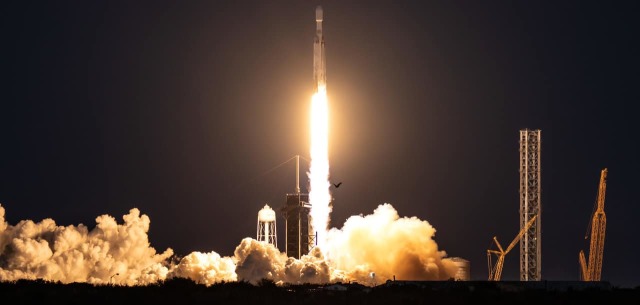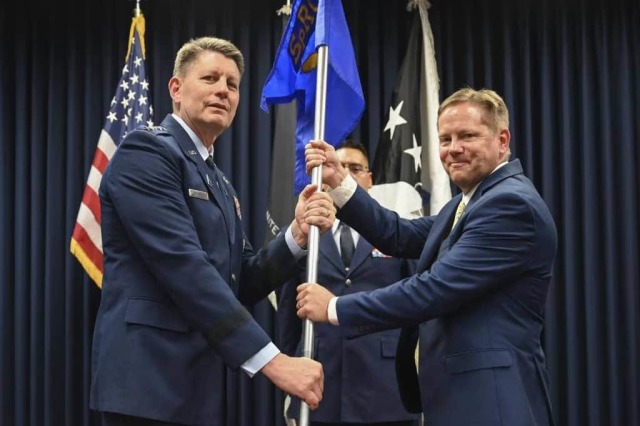Perhaps one of the most closed American organizations among those related to space exploration, for the first time shared with the public details about its activities, plans and work features.
The department is called the Space Rapid Capabilities Office (SRCO — can roughly be translated as "Office of Operational Capabilities for Space"). In the structure of the US Space Force (USSF), this is the third unit specializing in the organization of procurement and contracts. The other two are Space Development Agency and Space Systems Command, their tasks are more ambitious. The main difference between SRCO and them is greater freedom of action, fewer approvals and a focus on solving urgent problems that do not tolerate protracted bureaucratic red tape.
Until 2021, almost nothing was known about this department, except the very fact of its existence. Although SRCO appeared five years ago. Most of the department's activities are classified, but its head, Kelly Hammett, intends to change this.
He gave an interview to SpaceNew's portal, the reason for which was the launch of the SpaceX Falcon Heavy carrier in the interests of the US Space Forces (USSF-67 mission). The launch itself, of course, was not made secret by anyone, for American cosmonautics it has long been nonsense. But what was hidden under the fairing of the rocket was described in a streamlined way: the Continuous Broadcast Augmenting SATCOM 2 (CBAS-2) communication satellite and the maneuvering module (upper stage) Long Duration Propulsive ESPA (LDPE 2) with five "secondary" payloads on it.
As Hammett said, three of these five miniature payloads — just those that separated, and did not remain to work on LDPE2 — were satellites created as part of the activities of his department. These are not experimental, but finished products intended for use by defense departments. Two of them are equipped with sets of sensors to monitor the situation in near-Earth space. Another one is equipment for highly secure satellite communications. They will be used by the USSF, and based on their experience with them, they will extrapolate the results to other systems at their disposal. The entire development and launch cycle of the devices took less than three years, which can be called a record by the standards of the industry.
It is precisely in such promptness in responding to the challenges of national security and the country's defense capability that the whole point of SRCO's work lies. The bureaucracy familiar to any "procurement" state structures does not allow to act quickly — the approval of the terms of reference and the budget can take years.
The Air Force faced a similar problem at the time and solved it through the creation of the Rapid Capabilities Office in 2003. The name is identical, it is clear where the Space Forces got their name for the same department. On account of the "air" RCO — at least the program of the strategic stealth bomber Northrop Grumman B-21 Raider and unmanned spaceplane Boeing X-37. As well as many other less well-known or completely secret projects.
The key feature of SRCO that distinguishes it from other supply offices is significant autonomy at all levels. The US Congress and the Department of Defense directly delegated to the department the right to manage the budget at its discretion. With minimal approvals, the agency can conclude contracts with a total value of up to a billion dollars. Moreover, it is possible to redistribute funds between projects within one financial year, which is practically unthinkable for "ordinary" procurement offices. To do this, they need the approval of all responsible structures, each with its own superiors, or even directly from congress, if we are talking about the most expensive programs.
Such freedom also imposes a huge responsibility, as Hammett notes. Money should be distributed as carefully as possible: if finances turn out to be wasted, heads will fly. And no one else will allow such liberties to any branch of the Armed Forces.
In addition, the "classic" suppliers exert pressure. But not something you can think about: SRCO does not compete with anyone and, on the contrary, becomes a lifesaver for procurement departments.
Hammett's office is literally told: since he can work faster and more efficiently, he needs to work even faster and more efficiently — requests are received in such numbers that it is difficult to cope. Now he has 200 people under his command, 80 of whom are officers and officials, but "there are not enough tables for all projects anymore." Against the background of a rapidly growing industry, the Space Forces are constantly faced with new tasks that require the most rapid response. With which they go to SRCO.
Hammett and his colleagues are trying to compensate for the lack of free hands by attracting more private contractors, recruiting specialists from the industry and expanding funding. For the first two items on the list, agency representatives regularly attend conferences and other events in the industry. There they look for partners, monitor newcomers and novelties in cosmonautics.
Often, SRCO employees themselves speak at closed or simply non-public meetings, where they describe their tasks, available opportunities and emerging problems. Nevertheless, due to the high secrecy of the projects that the agency is working on, it is difficult to find private contractors.
The decision to disclose details about the secret satellites created by SRCO on USSF-67 is part of a broader campaign to declassify the agency's activities. This is necessary so that the division becomes more visible to politicians (who can give money) and representatives of the aerospace industry (potential contractors). In other words, to make it easier to work, Hammett needs to reduce the "degree of mystery".
In addition to details about the USSF-67 mission, the SRCO director spoke about two more current projects of his office:
- SCAR, Satellite Communications Augmentation Resource is a program to replace aging analog satellite antennas of ground infrastructure with more powerful and versatile active phased array antennas. The reason for the work was the urgent request of the Space Forces to expand the capabilities of existing satellite communication and control systems. More and more devices are being withdrawn, the available capacities simply cannot cope. BlueHalo has received an eight-year contract worth $1.4 billion for this task.
- GC3, Ground Command, Control and Communications is a program for the development of a single universal ground software system for satellite groupings, which Ball Aerospace and Booz Allen Hamilton are working on. This is a single platform for data exchange and equipment management in orbit, which can be used by any military departments working with any spacecraft. The problem is that now all space-related military organizations are either already using or creating their own satellite management and data exchange systems from scratch. They need to be unified. Most likely, GC3 will absorb a similar Enterprise Ground Services (EGS) program, which is handled by Space Systems Command.
Hammett's interview shows how the US military, despite the "sprawling" bureaucracy and the complexity of the political structure, keep up with the rapidly changing market and technological changes in the industry. According to the SRCO Director, the space industry is growing at an unprecedented rate, the agency should not lag behind, especially since government customers still play a key role in this market.
One of the most impressive and promising areas, according to Hammett, is satellite automation. He cites the example of SpaceX, which outputs 60 satellites at a time, and the devices independently diverge in orbit. These are exactly the technologies that the Space Forces definitely want to see in their arsenal in the near future.


